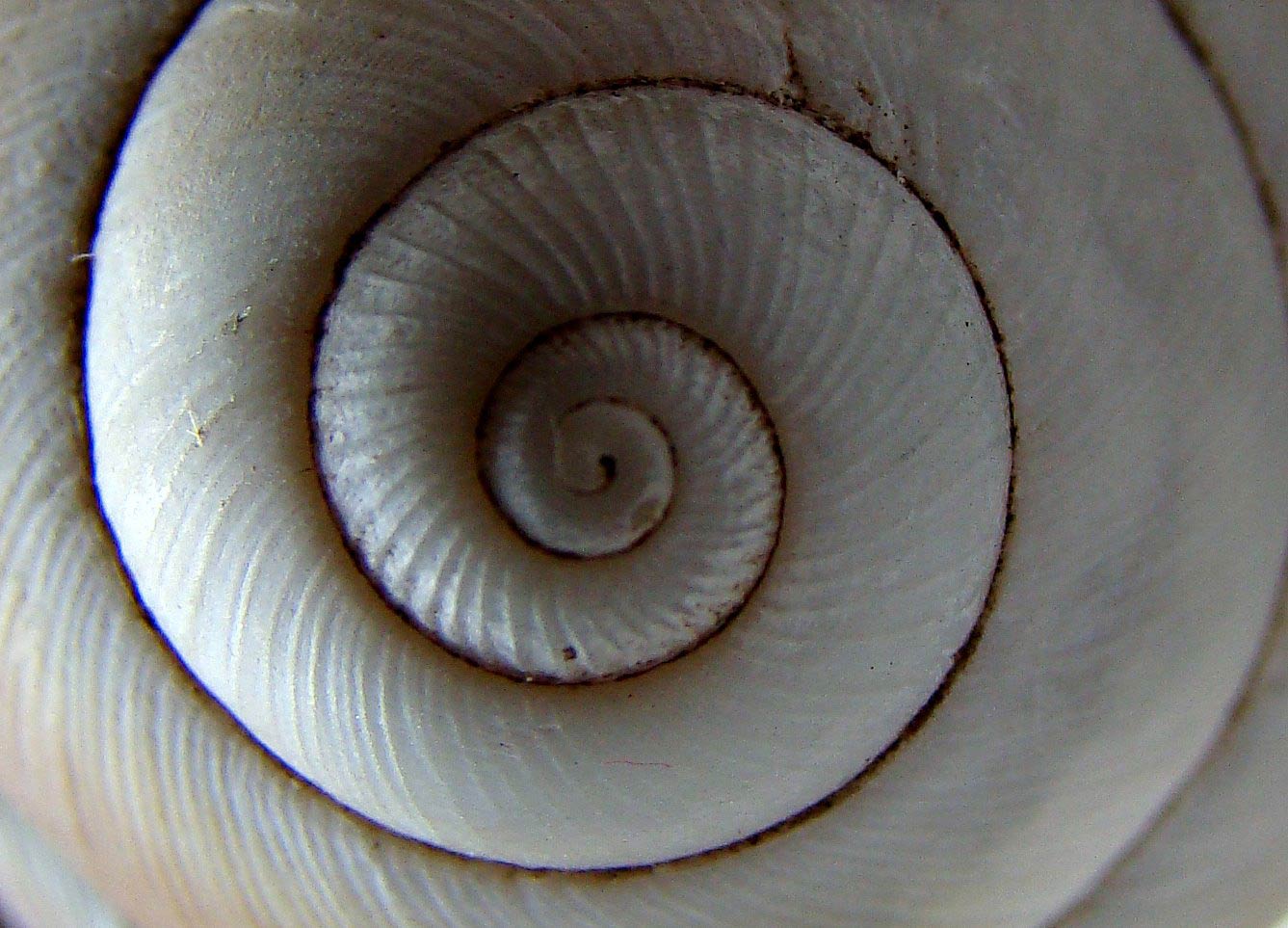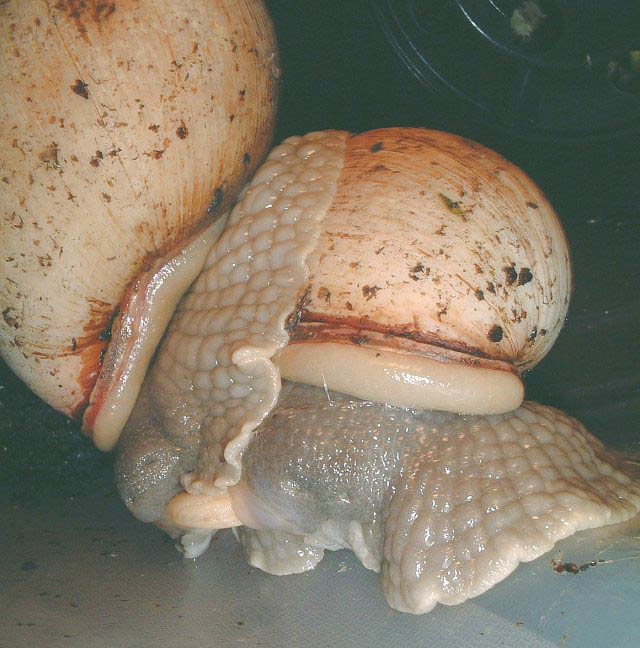Megalobulimus oblongus
|
Megalobulimus oblongus. (Photo: © Paula, Picasa) |
|
Megalobulimus oblongus. (Photo: © Paula, Picasa) |
|
Megalobulimus oblongus. (Photo: © Paula, Picasa) |
|
Megalobulimus oblongus. (Photo: © Paula, Picasa) |
|
Megalobulimus oblongus. (Photo: © Paula, Picasa) |
|
Megalobulimus oblongus: note the soft gelatinous texture of the snail's folded body. (Photo: © www.PetSnails.co.uk) |
|
Megalobulimus oblongus. (Photo: © www.PetSnails.co.uk) |
|
Megalobulimus oblongus. (Photo: © www.PetSnails.co.uk) |
|
Megalobulimus oblongus. (Photo: © www.PetSnails.co.uk) |
|
Megalobulimus oblongus: eggs ~ 30 mm. (Photo: © www.PetSnails.co.uk) |
|
Megalobulimus oblongus: juvenile. (Photo: © www.PetSnails.co.uk) |
|
Megalobulimus oblongus. (Photo: © L. Ruiz Berti, Wikipedia) |
Family
Megabulimidae
Species
Megalobulimus oblongus (Muller, 1774)
Common name
Giant South American snail
Description
The shellShell:
A hard, inflexible, calcareous or chitinous structure that vary in size and may either completely encasing the animal, covering some part of it or be internal.
of this species will vary in color from brown, to tan, to pinkish. There are no color markings on the shellShell:
A hard, inflexible, calcareous or chitinous structure that vary in size and may either completely encasing the animal, covering some part of it or be internal.
. It may grow as high as 70-100 mm, with 5.5-6 whorlsWhorls:
Pleural of whorl. A whorl is a complete spiral turn/growth of the shell of a mollusc. The whorls are counted from the apex outwards.
. The apertural (mouth) lipLip:
The margin of the aperture, which may be sharp or thickened depending upon the species (Also see apertural lip).
in adults of this species is pink. The umbilicusUmbilicus:
A navel-like indentation or depression in the center of the shell. It may be described as open (inside of columella visible), partially closed (partly covered by base of aperture) or completely closed (not visible). The width of the umbilicus is a measure of its greatest diameter.
(navel) is covered by the columellaColumella:
The central axis of the shell; originates at the shell apex and ends at the umbilicus.
(lip of mouth). This species is very similar in appearance to the giant African snails; however, obvious differences include:
- The whorlWhorl:
A complete spiral turn/growth of the shell of a mollusc. The whorls are counted from the apex outwards.
just above the body whorlBody whorl:
The large, final coil (most recently formed) of a mollusc shell that contains the body of the snail, i.e. from the aperture to approximately one whorl back.
has a characteristic bulge. - The body of the animal has a softer, gelatinous texture, when compared to the more leathery feeling of the acahtinids.
- They produce less slime.
Native range
South America
Distribution
Caribbean: Barbados, Jamaica
South America: Uraguay, Brazil, Argentina
Synonyms
- Strophocheilus oblongus
References
Abbott 1989Abbott 1989:
Abbott, R.T. 1989. Compendium of landshells. A full-color guide to more than 2,000 of the World’s terrestrial shells. American Malacologists, Inc., Melbourne, FL and Burlington, MA. pp. 240.; Rosenberg and Muratov 2006Rosenberg and Muratov 2006:
Rosenberg, G. and I.V. Muratov. 2006. Status report on the terrestrial Mollusca of Jamaica. Proceedings of the Academy of Natural Sciences of Philadelphia 155: 117-161.













